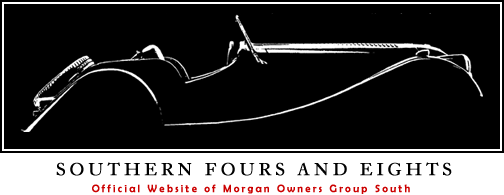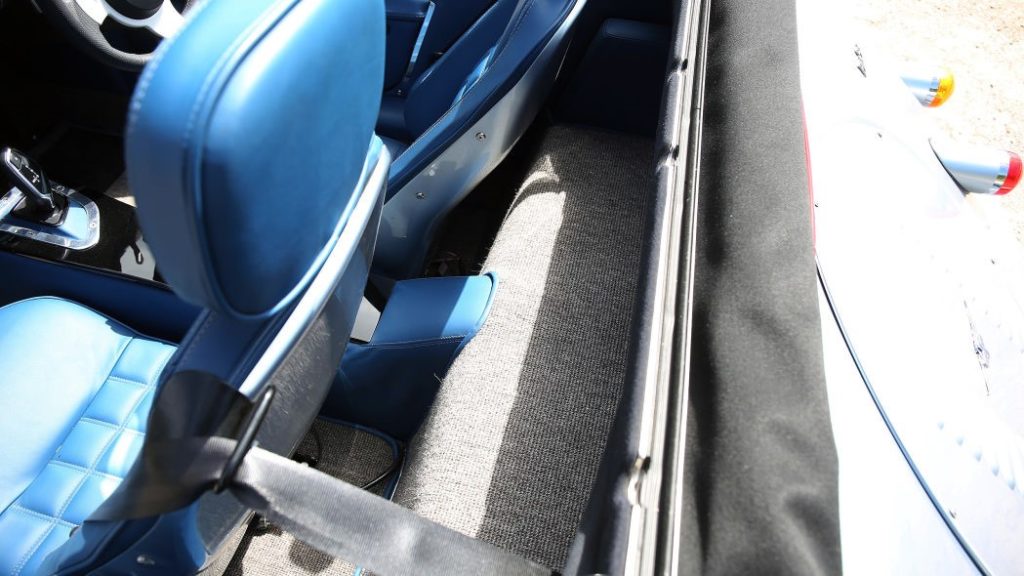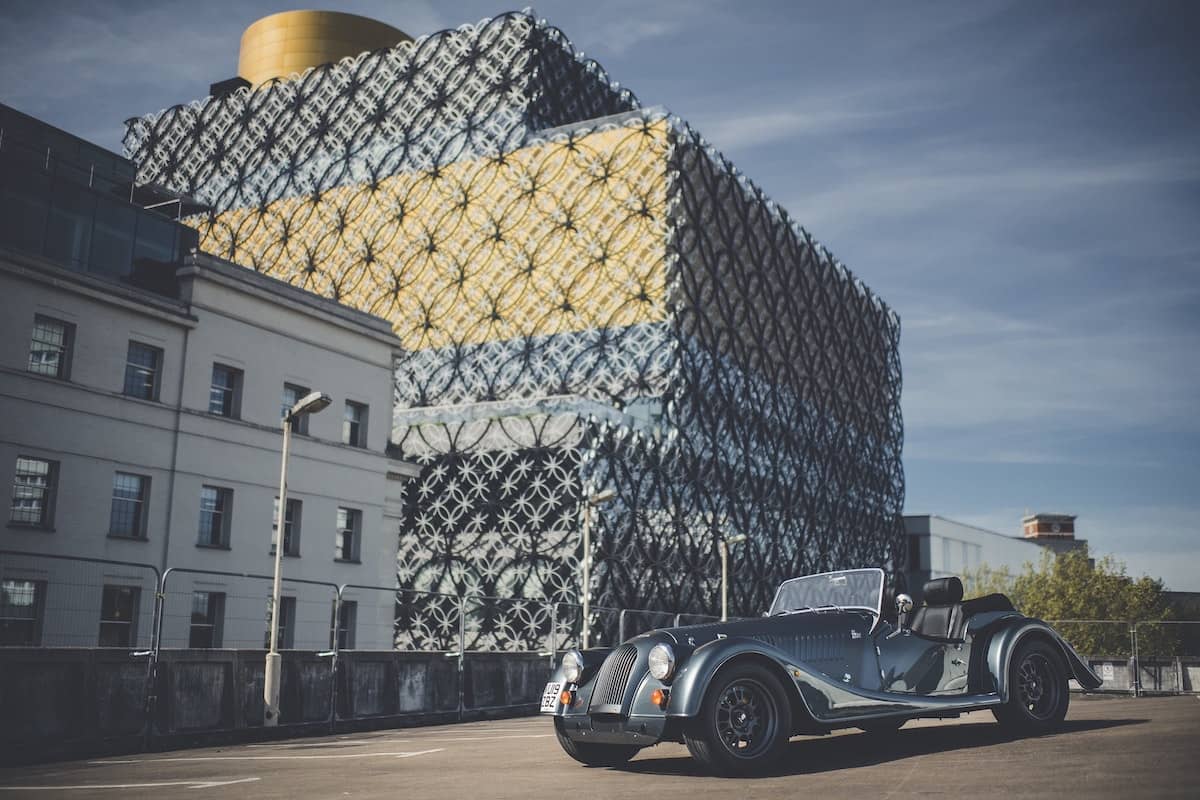Morgan Plus Six vs. Jaguar F-Type P380 (pistonheads.com)
Two brand-new six-cylinder British sports cars done differently. But which is more fun?
[Now that the press have been able to get their hands on the car, they are doing their best to report. And, I want to be sure you see what the world is saying about this new ‘Morgan.’ I still have no idea if or when we might get these cars in the US, so . . . for now, we have to be satisfied with pictures and words. Enjoy Mark]

Is there a valid twin test for a Morgan? There’s an argument to say that no, of course there isn’t, because if you want a Morgan then only a Morgan will do. But the Plus Six is no ordinary Malvern-built sports car; it’s using the first new platform for almost 20 years, it’s the first post-V8 Morgan, and it’s the first Morgan that won’t have a manual gearbox. Therefore it’s pretty big news. We’ve already established that the Six is borderline revelatory for Morgan, and there’s no better way to truly quantify an achievement than measuring it against a rival.
The F-Type makes more sense here than you might think. Beyond being separated by just three cubic centimetres in their forced induction, 3.0-litre six-cylinder engines, both Jaguar and Morgan use the same ZF automatic gearbox with different settings for shift speed, throttle response and so on. As tested, this F-Type is £79,650; the Plus Six now available to customers (the First Edition seen here is sold out) costs £77,995.
More than that, there’s an ideological examination to conduct here. Because the F-Type, despite piecemeal updates, is a fairly old car now. You could buy a 380hp, automatic V6 Roadster like this one back in 2013, which seems ages ago. So long ago, in fact, that its rivals have disappeared: the 911 is now a £100k car, a Boxster no longer has a six-cylinder engine, the AMG SLK has gone, the Lotus Exige has only gotten more hardcore since the introduction of the Roadster – and so on. To some extent it’s become the modern classic option in its own lifetime; not perfect, though hugely charming and very easy to like, thanks mostly to its styling and quite old-school engine. With the Morgan’s appearing even more emotive, and its architecture actually more modern, could it be a better take on the traditional British roadster appeal?

On the journey to Malvern, the F-Type – unsurprisingly – is entirely pleasant company. Roof up it plays the subdued, mature GT for as long as is required; with the roof down and the right buttons pressed, it’s immediately a louder, more visceral drop-top experience. That it drives how it always sort of has is no bad thing, either: Jag has a rare knack for tuning dampers, steering and control weights, with all present and correct in this middle of the range F-Type. It’s just a really nice sports car, an intriguing riposte to those who see the German equivalent as a bit sterile – even if the suspicion is that nice might not cut it for £80k.
Of course, on arrival at Morgan, it’s the Jag which is made to seem sterile, generic and overwrought. The F-Type is unquestionably a handsome sports car, in a way which could probably be called timeless, but there’s nothing like a Morgan for seizing your attention. The Plus Six almost seems like a restomod for its maker – dropping modern and familiar running gear in a body that looks near-identical – though it’s so much more than that. The clever bit is in appearing traditional for those who want it, with a more modern stance readily apparent to those in the know.
The mix of current day and timeless continues on the road, too. This is now a car that taller buyers can fit in, that requires little more effort to mooch around in than a Z4 and which can deal with imperfections in the road without wilting under the effort. The claim for a 100 per cent improvement in torsional rigidity from the CX platform sounds eminently believable, even at slow speed. The Plus Six still feels very much like a Morgan, however, with that evocative view out over the bonnet, a dashboard like no other and the sense of rather more wind in the hair than usual thanks to a perched driving position.

So what of that new engine? A big V8, be that from Rover or BMW, has become a mainstay of the Morgan appeal for decades; they’re now gone for good, replaced by the B58 straight-six turbo that’s also found in the Toyota Supra. Here it benefits from Morgan’s own tune and an eight-speed gearbox, as well as performance claims of 4.2 seconds to 62mph and 166mph. Despite effortless ease of use, bountiful torque and better mpg than a 2.0-litre Plus 4, it wouldn’t be a stretch of the imagination to see some die-hard fans not take to the six-cylinder. The rumble has gone, the immediacy of its throttle response is softened off and that endearing muscle car feel of an engine barely contained by a chassis has vanished. A pox on cohesive, thoroughly engineered sports cars, eh…
While the V8 is missed, the straight-six actually does an admirable job in pulling at heartstrings. The noise is more authentic than in a Supra, for starters – speakers can’t be manipulated if there are no speakers – with turbo whoosh overlaid by some straight-six howl. And by heck is it fast.
The F-Type never feels genuinely potent until it’s been made the recipient of its own V8 (where it thunders through that yardstick to become rabidly quick), meaning that the Morgan leaves the P380 V6 for dust here. Blame the weight advantage, the Morgan lugging around in the region of 400kg less with more torque; there’s just so little inertia, a trait of the light car/big engine blueprint that no level of technology can replicate (save perhaps electrification – and even that feels like a different kettle of fish). The Z4 and Supra are both brisk using this engine – the Morgan is properly fast, and just occasionally scarily so…

Perhaps the bigger surprise, though, is a Morgan made to seem capable of handling this sort of performance. No, it’s not a Boxster Spyder rival, scything through chicanes with a dab of oppo on exit. It still requires some thought and some planning, it still does wibble and wobble over poor surfaces and the front end is not the most immediate – but this is a world away from before. There’s traction and there’s grip, and finally there’s faith that what your feet and hands do will have a direct, predictable correlation to the car’s behaviour – not always guaranteed before. The Plus Six is a small, nimble car, and there’s little to beat zipping through country lanes in a Morgan that actually feels like it’s relishing the prospect. The electric steering has a more natural feel than a Supra’s, the brakes are strong and progressive (once through the dead travel) and there’s now sufficient body control and damping composure to enjoy a road rather than endure it. The gearbox is way sharper than the old BMW slusher, too, which would encourage use of the paddles, though they’re both too small and not nice to use, which is shame.
This quantum leap for Morgan ought to leave the F-Type feeling a little stagnant dynamically, but the fact is that the Jaguar did a damn good job out of the box. It isn’t the last word in any parameter, though arguably it doesn’t need to be; instead offering a balanced, rewarding, satisfying sports drive. Here, for instance, is a car with a Dynamic mode you might actually want to use and which does make the car feel more dynamic – tauter, more responsive, keener – rather than simply harder and worse. The subtlety in set up, including steering resistance that doesn’t assume unnecessary weight and damping that always retains some fluency, must be far more difficult to engineer in than simply cranking everything up to the max in hope of a ‘sportier’ feel. While the F-Type perception might be of a shouty and skiddy sports car – which it’s also more than capable of being – the Jaguar integrity and flow remain.
Which makes that weight penalty all the more frustrating. Because following Morgan with Jaguar, there’s no amount of class and capability that can undo the feeling of aloofness and detachment in the latter. And even when the summer turns sleety in Wales, the Morgan has traction and purchase, commodities that have previously been in short supply. Granted, the limits are ultimately lower (its rear Avons being the same width as the Jag’s front Pirellis) and trickier to approach given quite a short wheelbase. The Plus Six will spin its wheels in fourth gear, which is nothing if not a fitting repost to those who suggest a six-cylinder Morgan isn’t proper.

It is also, in the right situation – which includes moments in the real-world that don’t feature an empty Welsh B-road – tremendously entertaining. When it’s not the right situation and there’s a brand-new F-Type also trundling down a sodden motorway in rather more comfort, it’s less so. Because while bigger people do now fit, they’re still sat too high and with their feet cramped. While the roof makes some sense with practise, it’s still not suited to the actual requirements of a downpour. The engine is now quieter and more efficient at a cruise, though the driver is still bombarded with wind noise. Apparently the Plus Six is more suitable for cruising than any other previous Morgan; goodness knows what effort they must take.
Point is the Plus Six certainly retains some Morgan idiosyncrasies. Frustrations, for those feeling less kind. And the Jaguar, for all its apparent meekness in a direct comparison, requires far less compromise to deliver a genuine sports car experience. One that, despite advancing years – perhaps because of them, given the dearth of rivals – still has the charm to lure you in and the prowess to prove it’s more than superficial.
So what does all that mean for any kind of useful conclusion? The Morgan, after all, doesn’t even have a radio, leave alone sat-nav, CarPlay and a 10-inch touchscreen. The Jaguar, for all its pomp and ceremony, feels as mass produced as an XE diesel; both in its ease-of-use and its quite ordinary feel in comparison to Malvern’s best effort. They’re very different cars.

The Plus 6, though, is a watershed moment for Morgan and a mammoth achievement; it requires less compromise than any previous model while still delivering wholeheartedly on the pub-lunch-in-the-countryside charm that’s expected (or demanded) of a sports car from the Malvern hills. As a modern take on a much-loved formula that’s decades old, injecting usability without removing significant emotional appeal, it must be marked a resounding triumph.
It’s not as complete a sports car as the F-Type, which still retains a considerable talent for worming a way into your affections – though arguably it never had to be. This experience is worth the compromise; if an £80k sports car is being saved for high days and holidays, which is hopefully a fair assumption to make, then it should be a special one. For all the flaws and foibles, and despite the Jag’s enduring allure, it’s the Morgan that ticks the box most convincingly. For those who’ve lusted after one for years, there’s never been a more compelling reason to take your place on the waiting list.
SPECIFICATION – MORGAN PLUS SIX FIRST EDITION
Engine: 2,998cc straight-six, turbocharged
Transmission: 8-speed automatic, rear-wheel drive
Power (hp): 335@6,500rpm
Torque (lb ft): 369@N/Arpm
0-62mph: 4.2sec (claimed)
Top speed: 166mph
Weight: 1,075kg (dry)
MPG: 38.2 (NEDC)
CO2: 170g/km (NEDC)
Price: £89,995
SPECIFICATION – JAGUAR F-TYPE CONVERTIBLE R-DYNAMIC P380
Engine: 2,995cc, V6 supercharged
Transmission: 8-speed automatic, rear-wheel drive
Power (hp): 380@6,500rpm
Torque (lb ft): 339@3,500rpm
0-62mph: 4.9secs
Top speed: 171mph
Weight: from 1,614kg
MPG: 28.8
CO2: 223g/km
Price: £71,725 (as standard; price as tested £79,650 comprised of Madagascar Orange Ultra Metallic Paint for £3,500, Black Exterior Pack for £625, Ebony Suedecloth sunvisors with vanity mirrors, Ebony Suedecloth headlining for £580, 20-inch ‘Style 5042’ carbon fibre, Satin Grey and diamond turned wheels for £520, Climate Pack (two-zone climate control, heated windscreen, heated front seats and heated steering wheel) for £1,070, Front parking aid for £255, Rear view camera for £275 and Seat Memory Pack (auto-dimming, power fold, heated door mirrors with memory, electrically adjustable steering column with memory 12-way electric seats with driver and passenger memory) for £1,100













